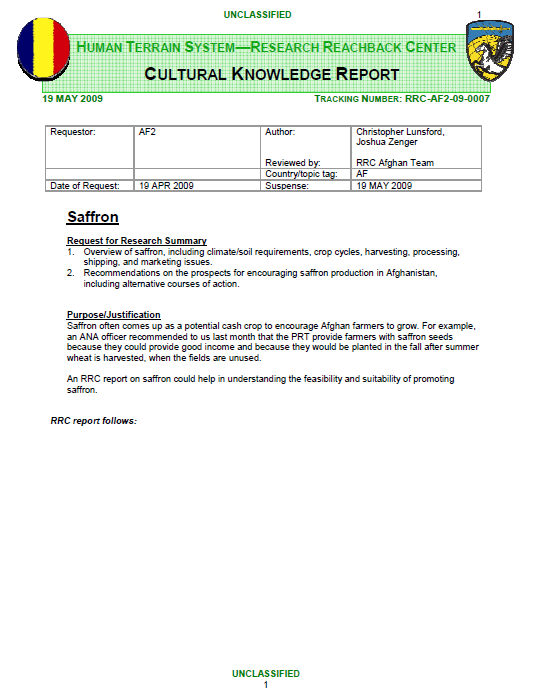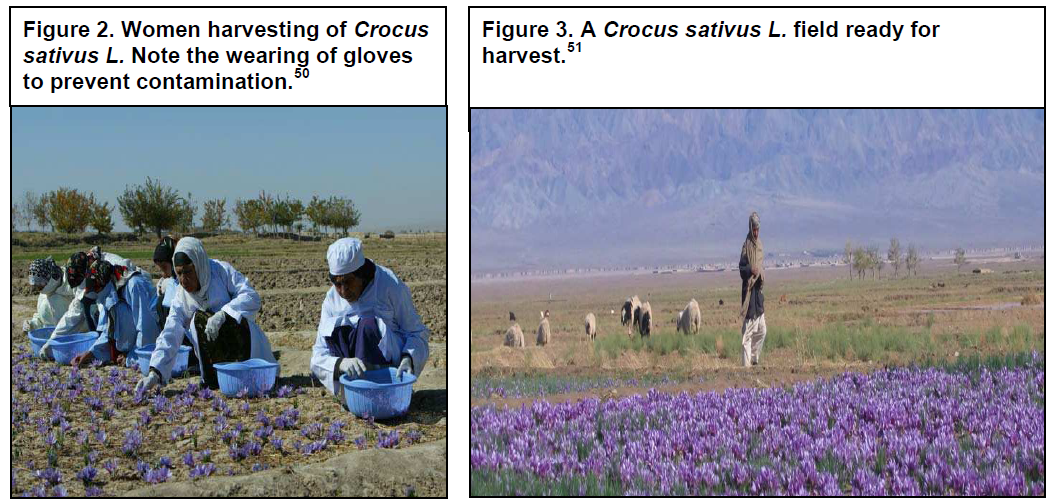 RESEARCH REACHBACK CENTER
RESEARCH REACHBACK CENTER
- 24 pages
- May 19, 2009
Saffron, referred to by some as “red gold,” has been in demand for centuries. The Latin name for the plant which bears the delicate spice is Crocus sativus L. Saffron growing has been promoted in Afghanistan in recent years in response to a call from the Afghan government to investigate economically viable licit alternatives to poppy. Due to the significant labor costs inherent to saffron production, saffron is the world’s most expensive spice. Not only are saffron profits competitive with opium, in relation to other licit crops, but saffron needs little water during growth, requires minimal refinement, and has a low volume and weight, making it easily transportable. Additionally, its production provides large-scale employment, often carried out by women, and does not compete seasonally with other crops for water or labor. Afghanistan’s climate, soil, and labor conditions make it a suitable place for the production of saffron, and may even give it a competitive advantage over other saffron producers.
While many may see saffron as the perfect solution to an economy based on the trade of an illicit commodity, there are a number of limiting factors in the development of a saffron industry in Afghanistan. Notably, the access to quality corms, or bulbs, from which to start production is insufficient, and the corms are expensive. Additionally, crocus fields take time to mature, occupying a field for several years, during which time the use of the field for other crops is greatly inhibited. Finally, making a premium return on
saffron requires a comprehensive strategy from growing to marketing. A campaign that simply passes out corms to farmers is not enough. Thorough follow-on training and additional support in all aspects of cultivation, processing, and marketing is essential if Afghanistan’s budding saffron industry is to be competitive and profitable.The report below first gives a brief history of saffron and its uses, followed by a detailed description of the necessary conditions and best practices for growing and cultivating saffron. The report then turns toward the economics of saffron, including an account of the Afghan saffron industry at present and marketing strategies that lay out what more could be done to expand the saffron industry in Afghanistan.
…

